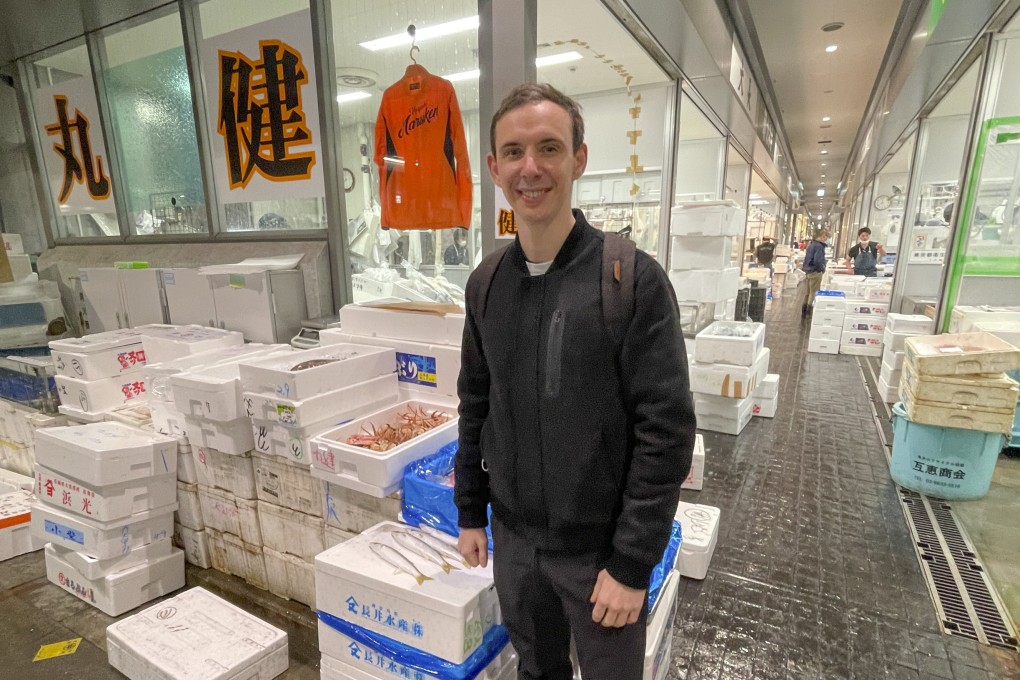How a top 5-star-hotel chef in Japan tackles a Tokyo fish market – we join him on an early morning trip
- Chef Daniel Calvert moved from Hong Kong to Japan in 2021 to head up Four Seasons Hotel Tokyo’s flagship French restaurant Sézanne
- Once a week his team heads to Tokyo’s Toyosu fish market, a location beloved by chefs. We see what attracts his eye – and what makes him squirm

It’s barely seven hours since we said goodnight following a truly world-class dinner at his restaurant, Sézanne at Four Seasons Hotel Tokyo, in Marunouchi, but chef Daniel Calvert is already up and about, somewhat bleary-eyed, as we meet in the autumnal sunshine outside Tokyo’s Toyosu fish market.
While Toyosu may lack some of the charm of the famed and historic Tsukiji fish market, it’s still a wonderland of peerless produce, beloved by chefs who visit for inspiration as much as for the finest seafood that money can buy.
That’s particularly true for Calvert, who in 2021 was a new Tokyo transplant having moved from Hong Kong to head up the flagship French restaurant at the five-star hotel.
The British chef has a reputation for exacting standards and our 7am rendezvous is already a late start (the fish auctions take place two hours earlier), but he and his sous chef, Ashley Caley, are still thrilled by what is on offer.

Endless freezing walkways are filled with stalls offering vast ruby red tuna, vermilion octopus, deadly fugu (pufferfish), trays of burnt orange uni and buckets of silvery live eels – clearly not Calvert’s favourite; he squirms slightly upon seeing them.
We’re in hairy crab season and he is wowed by the size of some of the famed crustaceans. He mentions, however, that during his visit the previous week he could tell that “they weren’t ready yet”.
